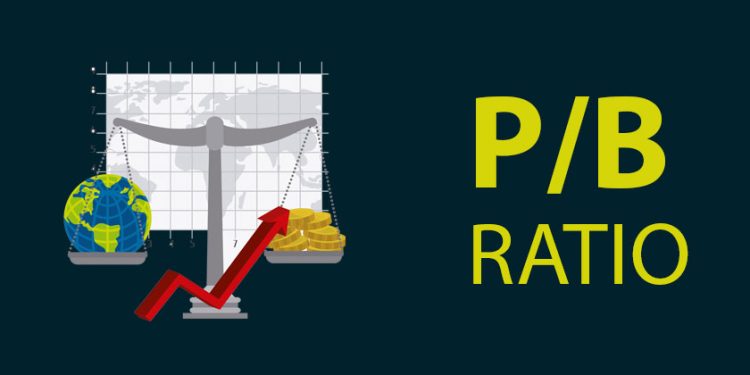Introduction
The Price-to-Book (PB) ratio is a crucial financial metric for capital market participants. It helps investors assess a company’s valuation and compare it with the book value of its assets. Thus understanding the price to book ratio helps investors in decoding the company’s financial health and growth potential in its stocks. Let’s deep dive into the concept of PB Ratio, why it is essential for investors, how it is calculated, what are the benefits and limitations when considering this ratio for investment decisions.
Topics Covered
- What is the Price to Book Ratio
- Advantages of Using PB Ratio
- How to Interpret PB Ratio
- Limitations of Price to Book Ratio
- Difference between PB Ratio and PE Ratio
- Importance of Price to Book Ratio in Share Market Analysis
- Conclusion
What is the Price to Book Ratio
The price to book ratio is a measure that compares a company’s market price per share to its book value per share. In other words it helps us determine how many times a stock/ share of a company is trading above the company’s book value. So the calculation of the PB ratio is straightforward. Simply divide the market price of the stock by its book value.
PB Ratio = Market Price per Share / Book Value per Share
Besides PB ratio, the investor needs to consider other valuation ratios, such as the PE (Price-to-Earnings) ratio to gain insights on company’s financial position.
Begin your investing journey today. Your Demat account is the first step.
Advantages of Using PB Ratio
- The PB ratio is one of the most stable metrics that can be used by investors to find undervalued
stocks. - It is also useful when a company has a lean period with negative earnings.
- it is ideal for value investors who look forward to buying undervalued stocks and capture price
rise in the future. - This is simple metric to calculate and understand the stock potential and can be accessed easily by
new investors. - It allows new investors to assess a company’s assets in relation to its market value.
- They can easily identify undervalued stocks with growth potential.
How to Interpret PB Ratio
Interpreting the price to book ratio involves understanding high and low values. A low PB ratio suggests that a company’s stock may be undervalued, while a high PB ratio indicates the stock might be overvalued. This ratio is significant in making investment decisions as it provides insights into a company’s asset valuation and growth potential. By purchasing undervalued stocks, some investors wait for markets to reward the stock in future. However, low PB could also be an indicator of fundamental issues with the company. Historical ratios of successful companies can serve as a reference for investors in identifying potentially promising investments.
Limitations of Price to Book Ratio
Despite its benefits, this ratio has some limitations. It heavily relies on the book value of a company’s assets, which may not always represent its true market value. It would not give an exact overview of a company’s financials for service based businesses with more intangible assets. Book value ignores the value of intangible assets such as company’s brand name, patents, and intellectual property. The applicability of the price to book ratio ratio is limited to certain industries, where asset values play a significant role. Additionally, historical accounting methods can also lead to inaccuracies in the price to book ratio ratio.
Difference between PB Ratio and PE Ratio
PE Ratio
The Price-to-Earnings Ratio (PE) ratio, like the price to book ratio, is another vital valuation metric. While the PB ratio compares a company’s market price per share to its book value per share, (i.e. net assets’ value), the PE ratio compares a company’s share price to its earnings per share (i.e. its profitability). While both ratios assess a company’s valuation, the PE ratio focuses on earnings, while the price to book ratio emphasizes assets. The choice between the two ratios depends on the investor’s preferences and the nature of the company being analyzed.
PB Ratio
The PB ratio is favored by value investors looking for undervalued stocks with growth potential, while growth investors prefer the PE ratio for companies with high growth prospects. Both ratios complement other financial metrics and aid in making well-informed investment decisions based on investment objectives and company characteristics
Importance of Price to Book Ratio in Share Market Analysis
The PB ratio is valuable in comparing companies within the same industry. It helps investors determine market trends and understand a company’s valuation in relation to other economic factors. By analyzing the PB ratio of various companies, investors can make more informed investment decisions.
Recommended Read: Factor affecting valuation of shares
How to Calculate PB Ratio
Calculating the PB ratio is easy. All you need to do is divide the company’s market price per share by its book value per share.
For example, let’s say a share of a company is trading at Rs.120, and book value per share is Rs. 40, the PB ratio would be 3 (120/ 40).
A P/B ratio below “1” indicates an undervalued stock, while the PB ratio over 1 indicates that the share is being sold at a premium.
Recommended Read: Demat Account Meaning
PB Ratio and Market Timing
The PB ratio can be a useful metric for making investment decisions during differing market conditions such as bull & bear markets.
A low ratio during bear markets may indicate potential buying opportunities, while a high PB ratio during bull markets might signal an overvalued market. However, it’s essential to use the ratio along with other market indicators for making a comprehensive analysis. On a standalone basis, you may not make a good investment decision with PB ratio.
Recommended Read: Tick size meaning in stock market
How to Find PB Ratio of a Company
To find a company’s PB ratio, you can refer to your broker’s website or financial news websites that provide detailed information for various stocks. Alternatively, you can calculate it yourself by obtaining the company’s financial statements and using the formula mentioned above. Assessing this ratio you can determine whether a particular company’s stock aligns with your investment goals or not.
Recommended Read: What is a Merger
Conclusion
In conclusion, the PB ratio is a valuable tool for investors in the share market. Its simplicity in determining undervalued stocks makes it an important metric for making investment decisions. However, investors should also be aware of its limitations, such as overdependence on book values and its applicability in specific industries. By understanding and utilizing the ratio effectively, one can make more informed choices and achieve their financial goals in the ever-changing share market.
Understand the significance of Price to Book Ratio when evaluating stocks, crucial knowledge for individuals exploring online demat account opening and delving into stock market investments.











